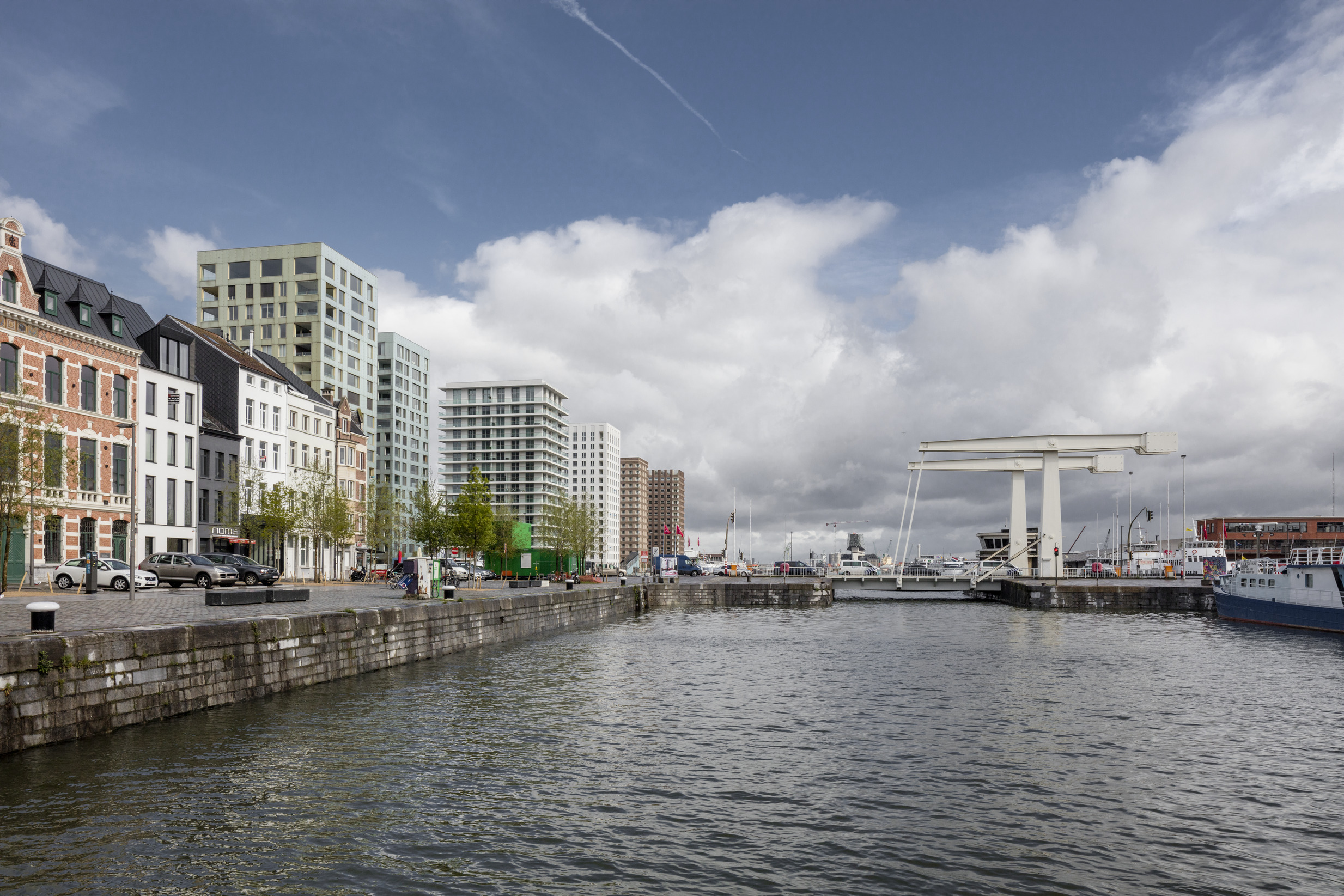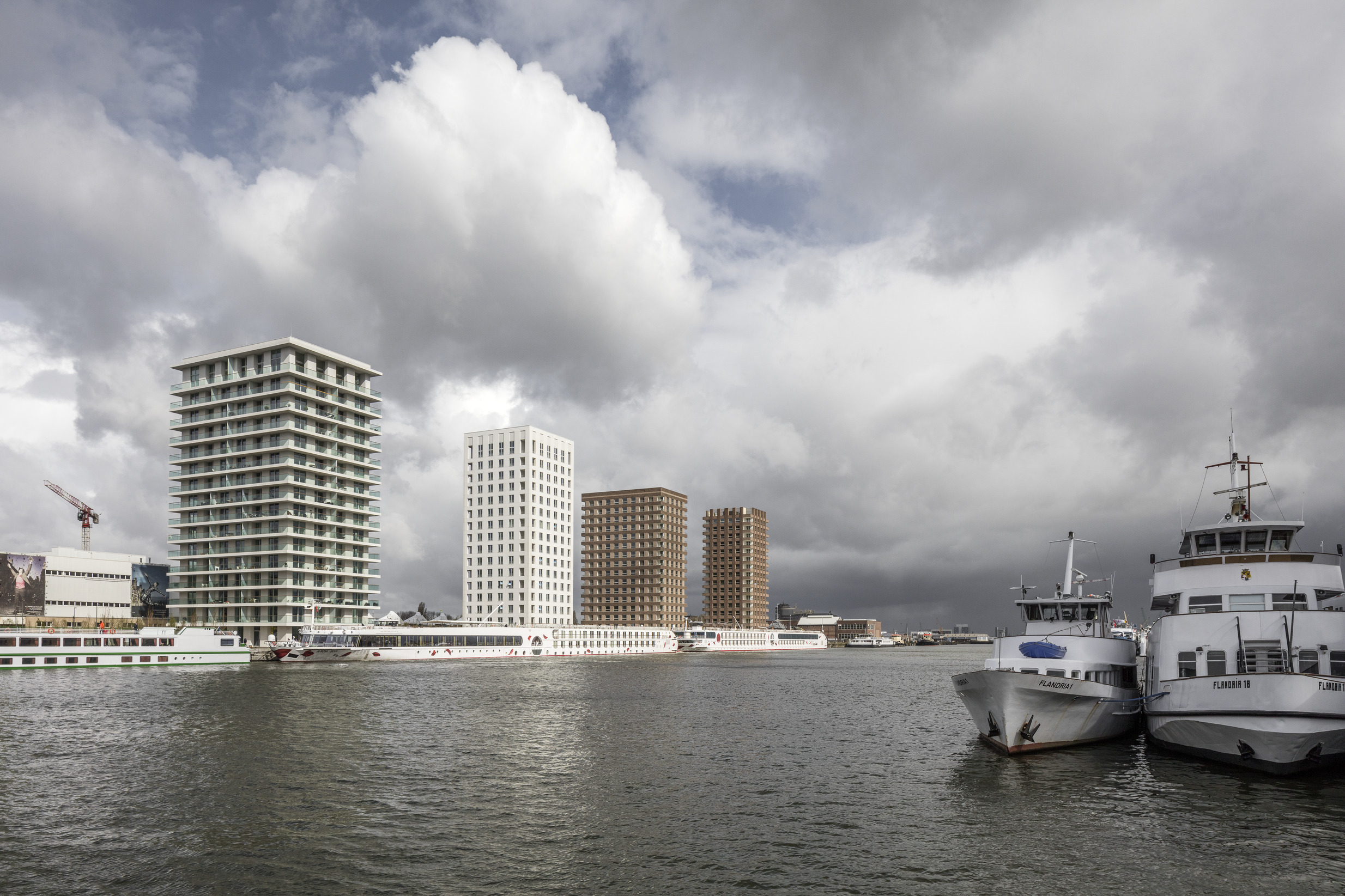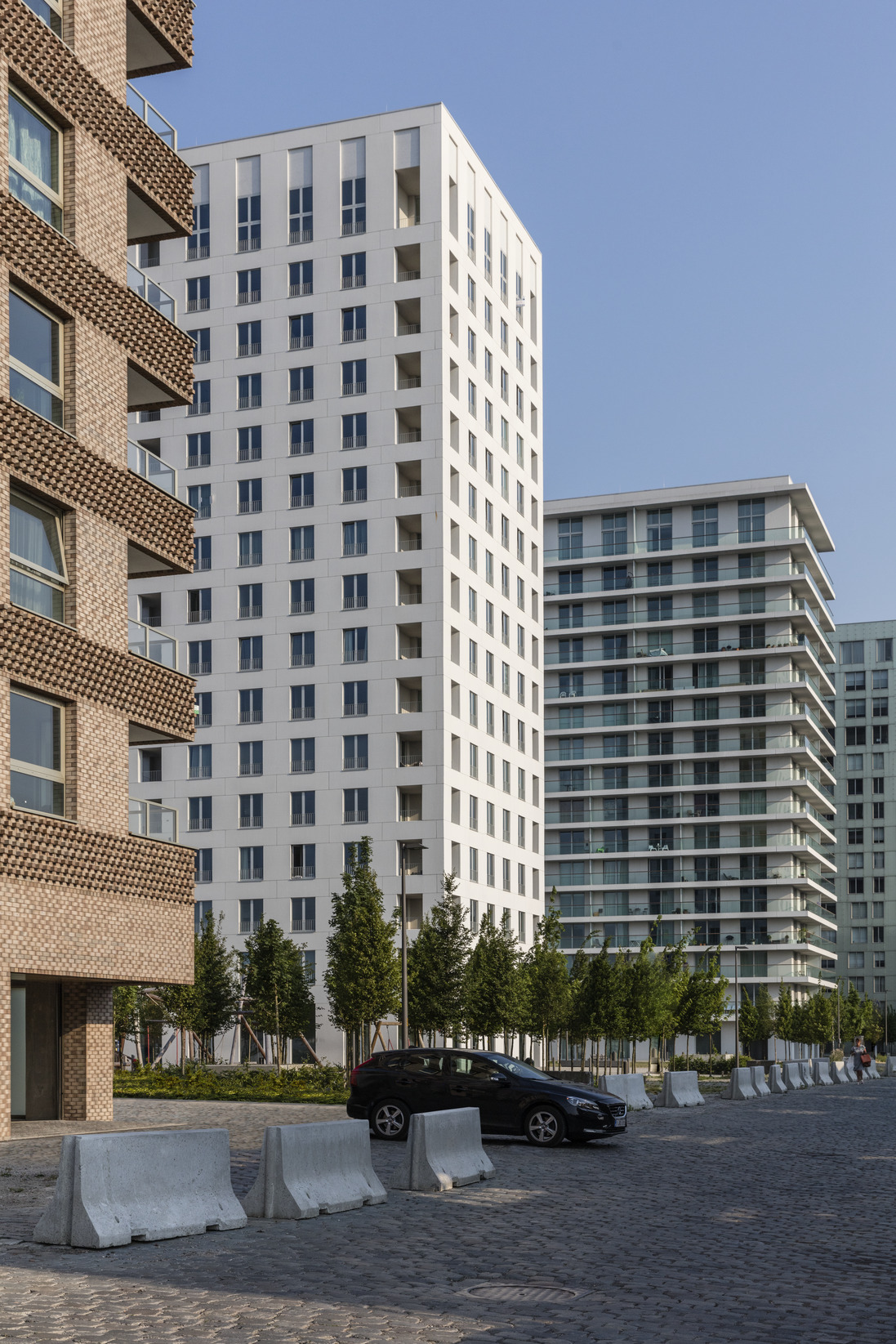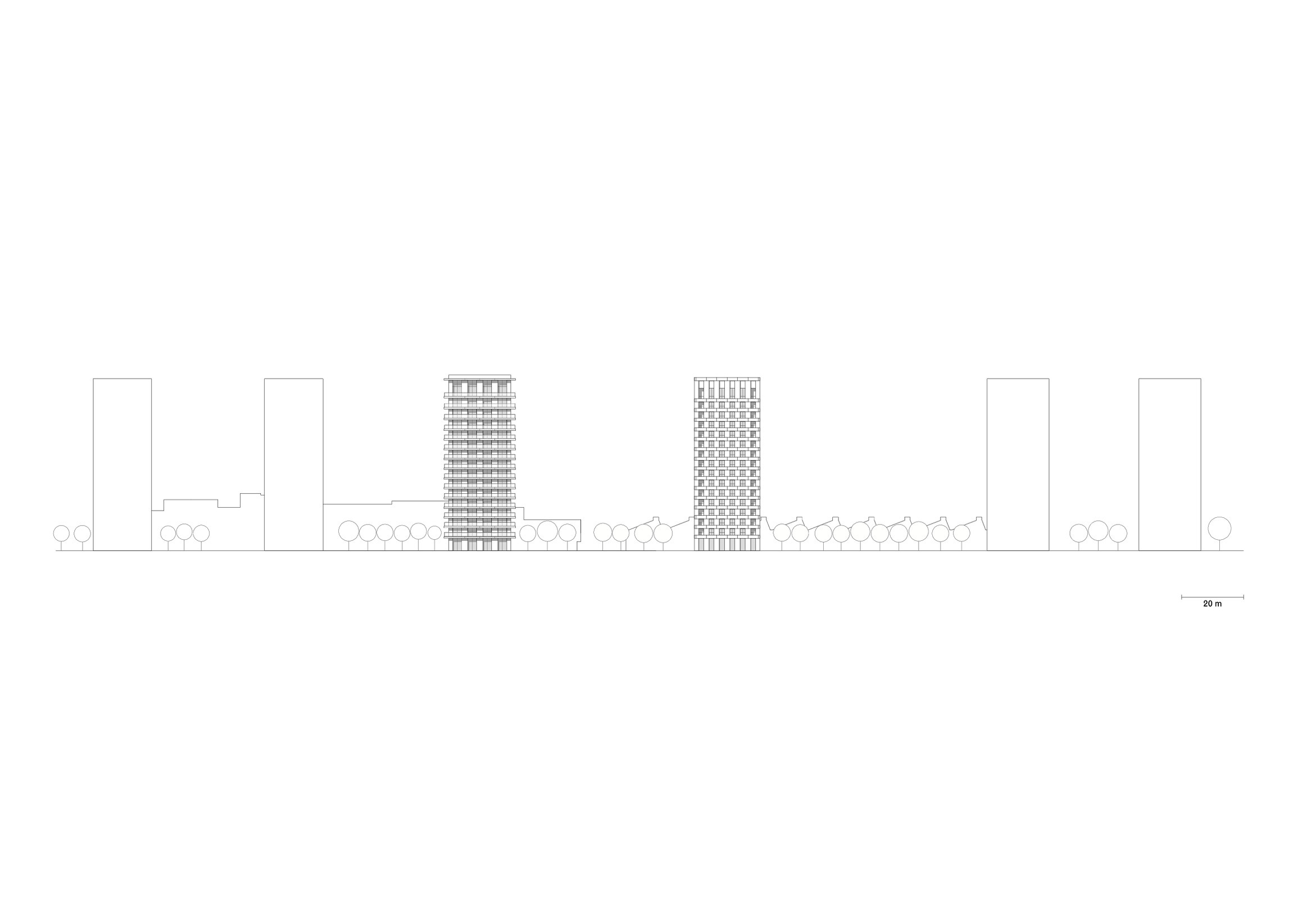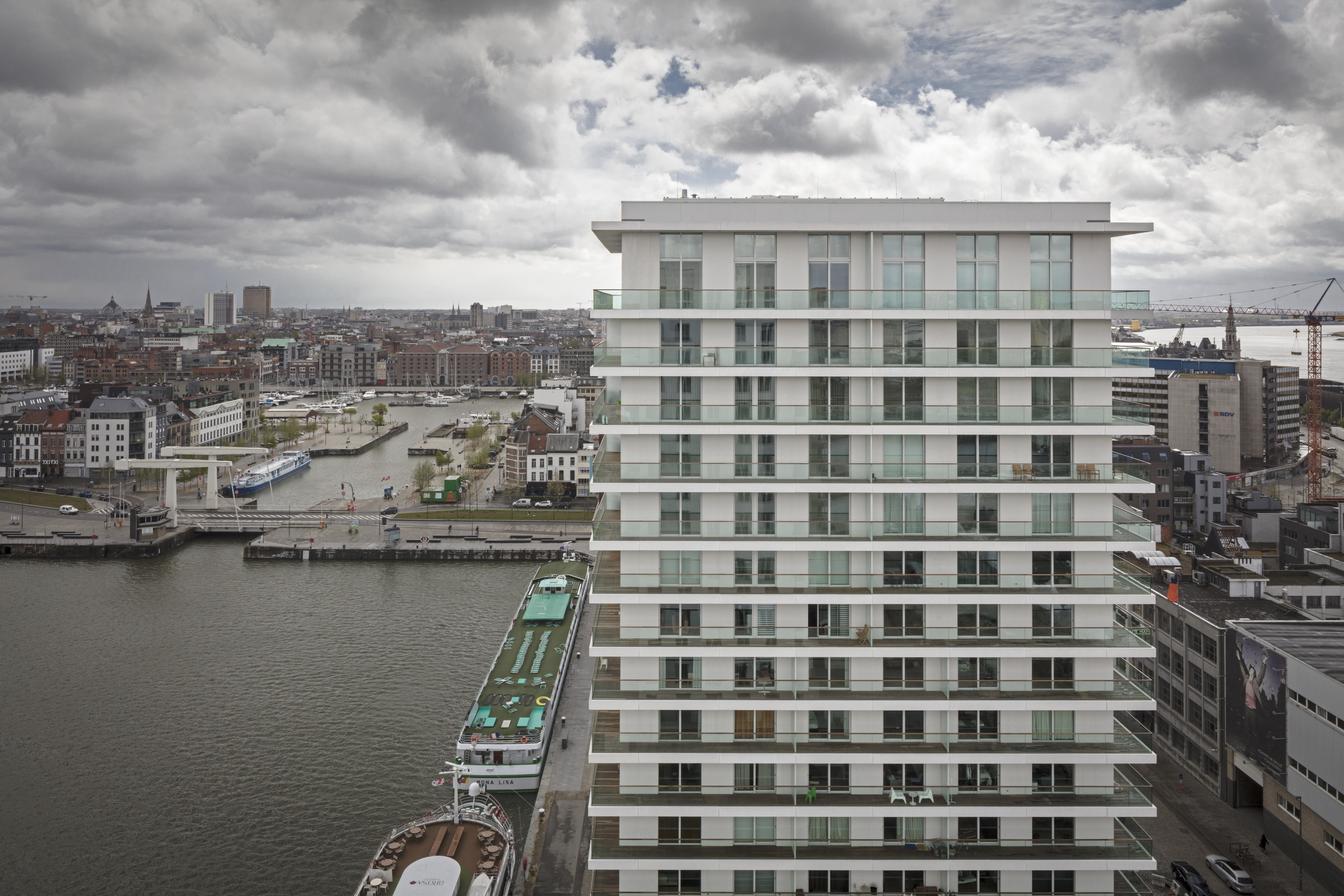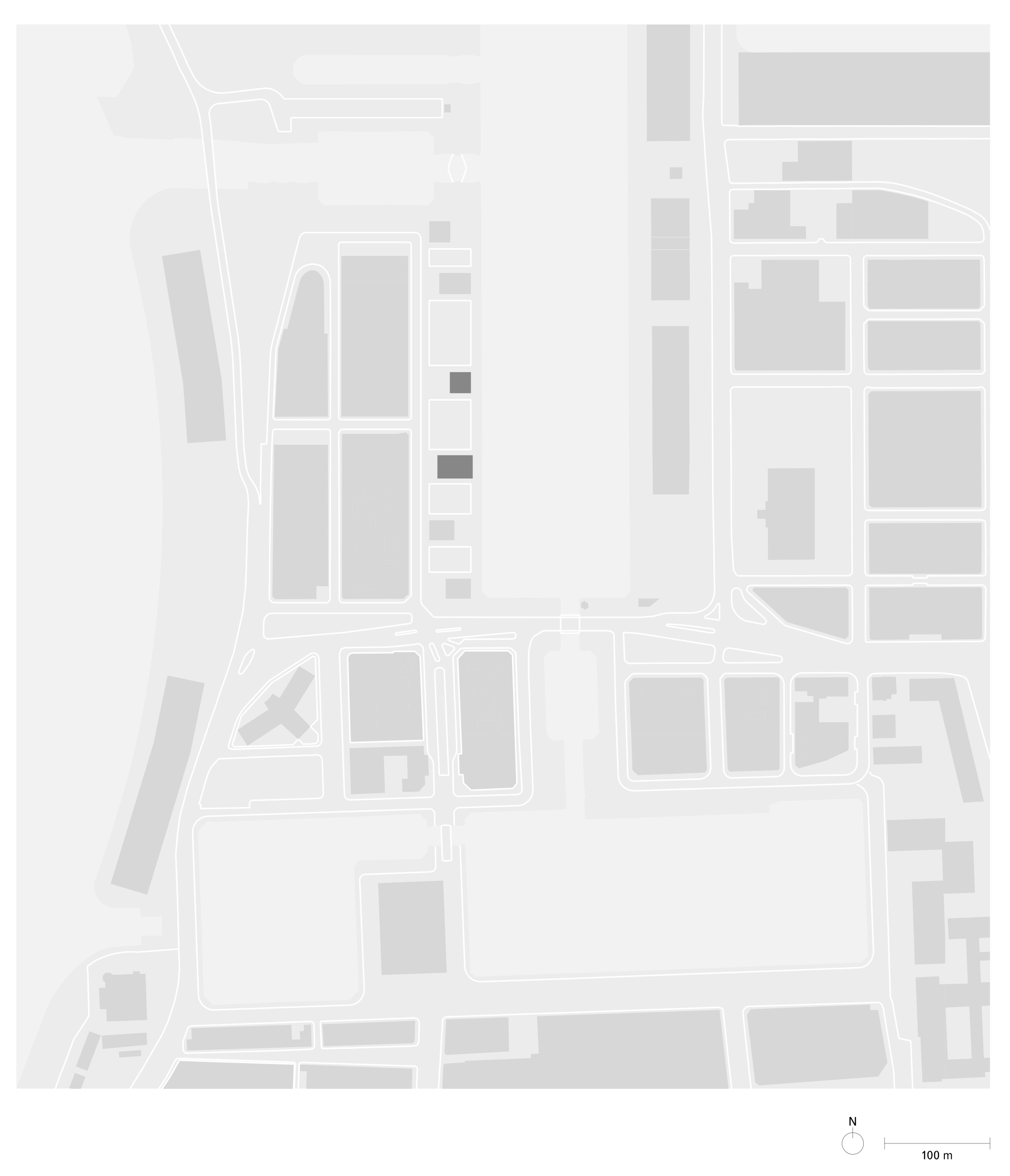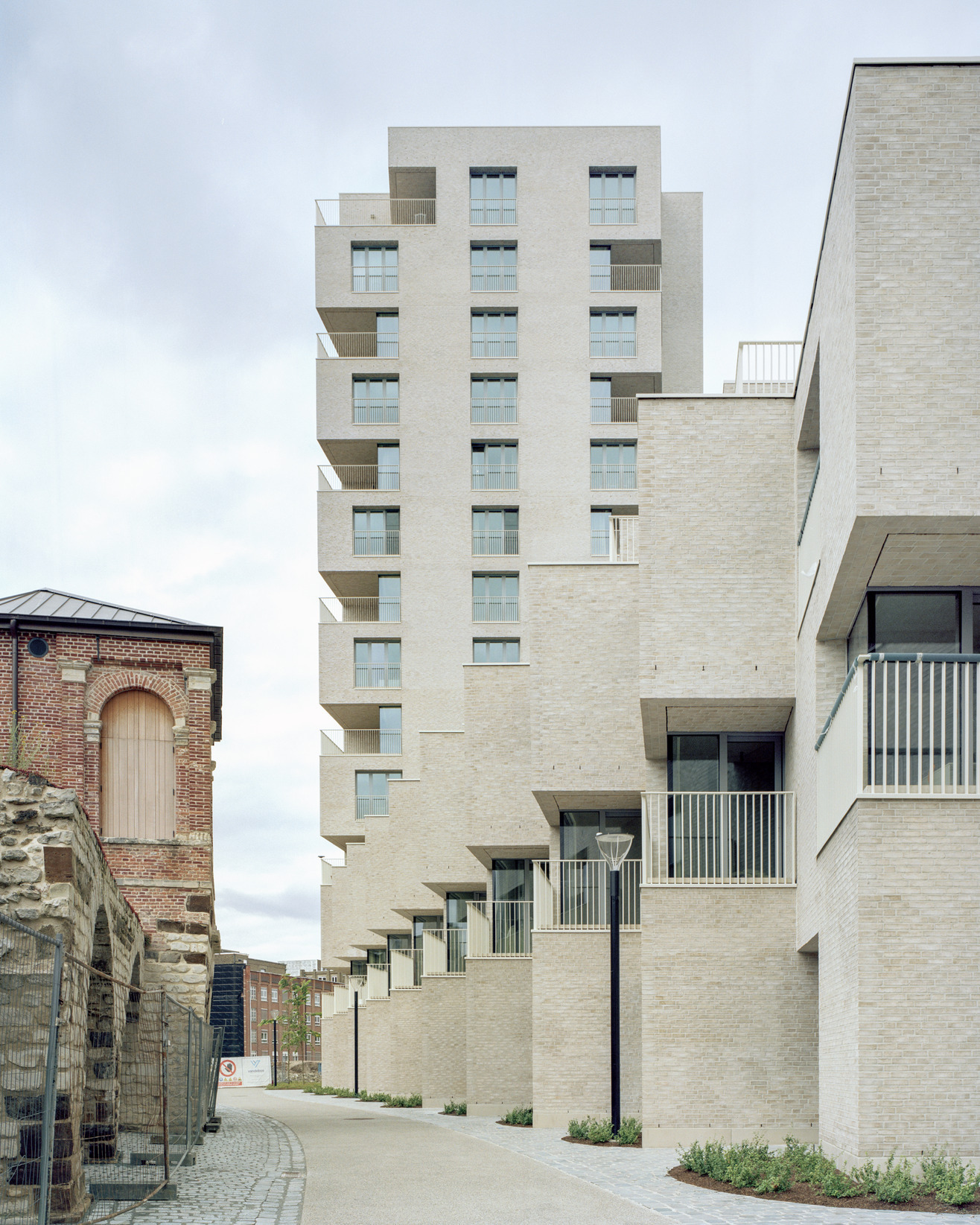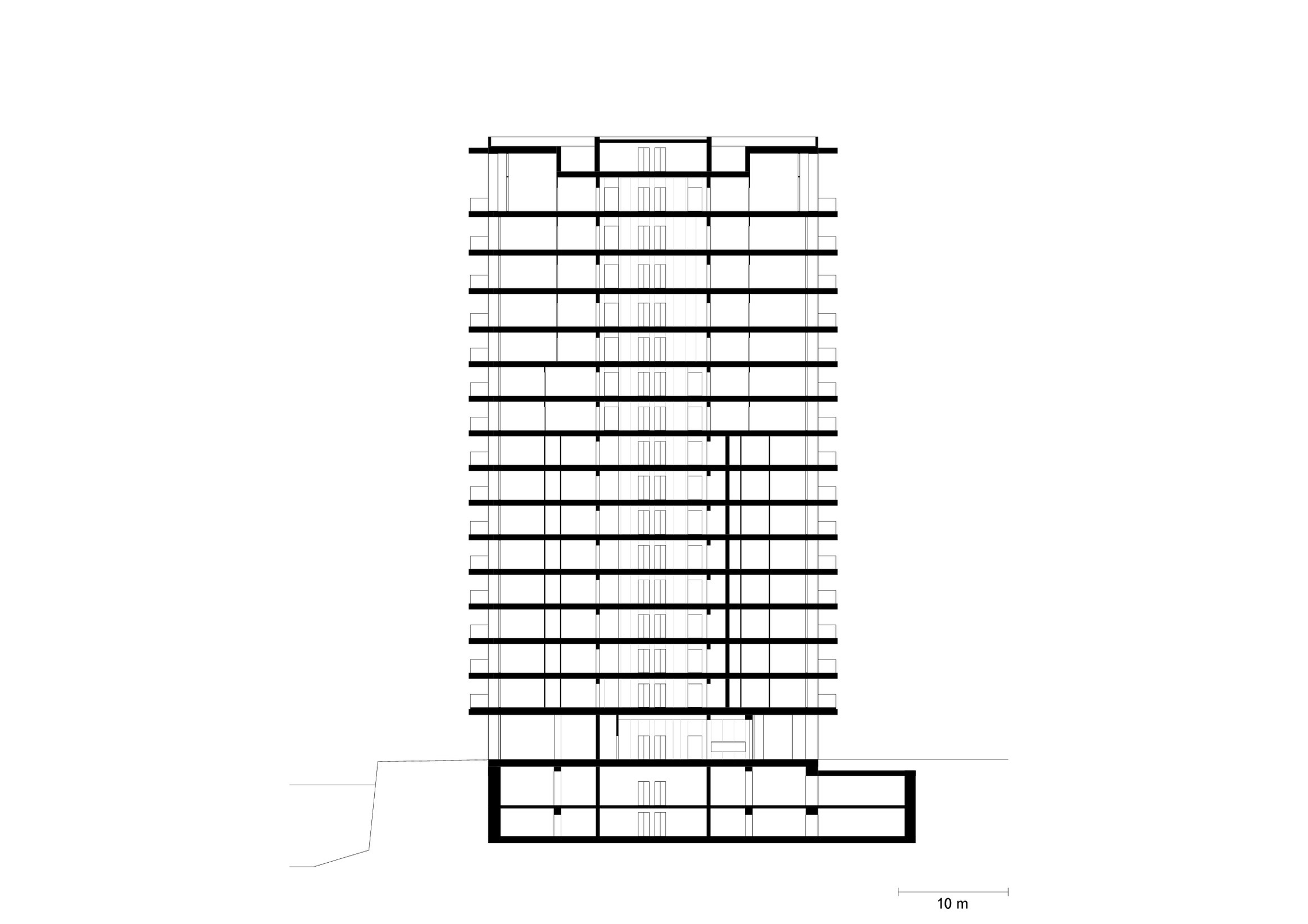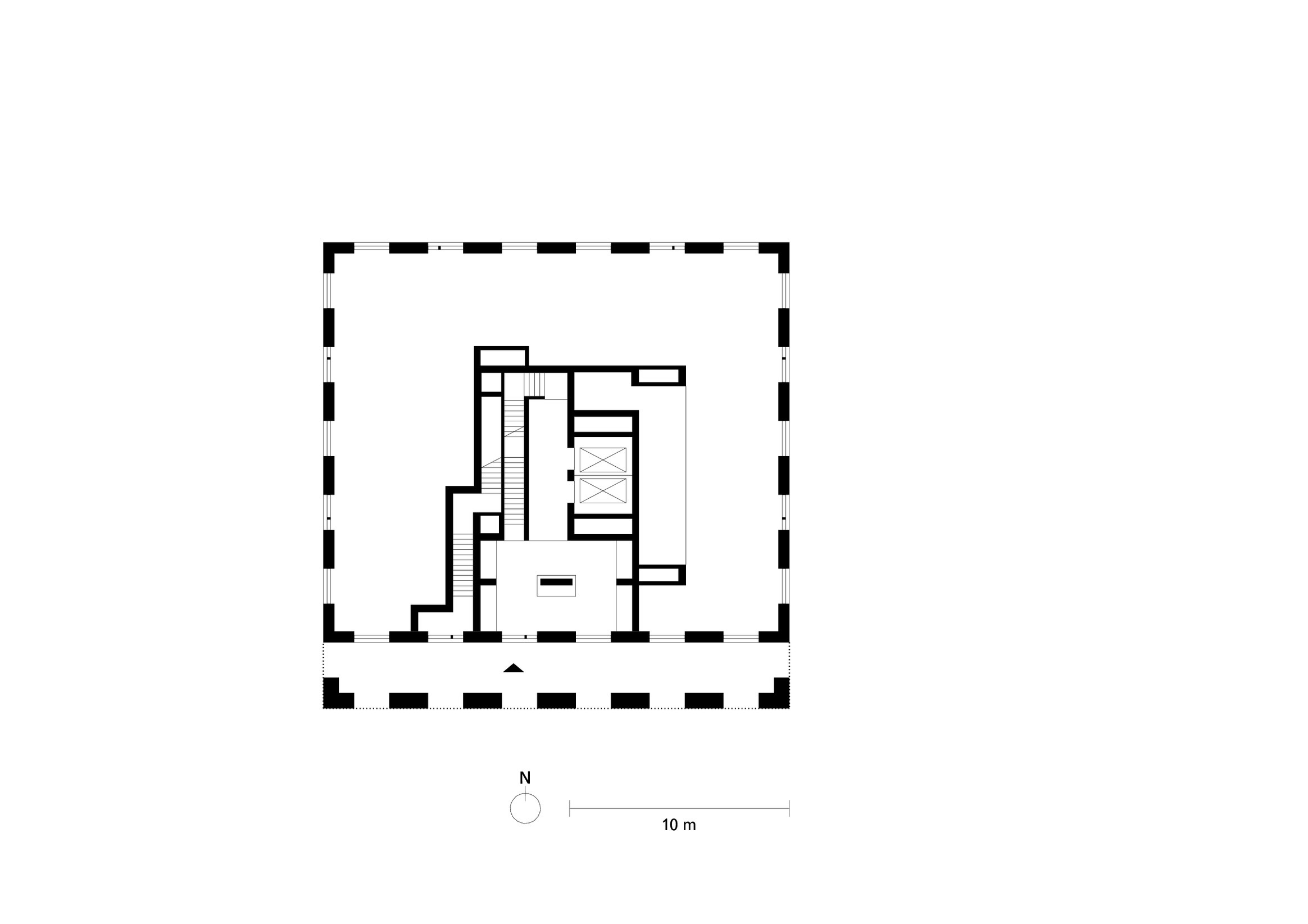Westkaai towers
Antwerp, Belgium
2001–16
Antwerp has been one of the most important trading ports in Europe since the Middle Ages. Kattendijkdok was built in the mid-nineteenth century, and marked the starting point for the large-scale extension of Antwerp’s harbour. The area is characterised by a mix of large warehouses and small-scale residential buildings. With the majority of the port’s functions now housed in the larger docks to the north, a masterplan was developed in 2002 to bring new life to the area.
The plan upgrades the harbour area with the addition of residential and cultural buildings as well as public esplanades, which create a link to the historic city centre. Within this context, six residential towers were planned along the western edge of the dock. The towers are all 15 storeys high, accommodating apartments of various sizes, as well as retail at ground floor level.
David Chipperfield Architects Berlin was appointed to design the two central towers, Tower 3 and 4. Both have a structural presence and uniform materiality, though each tower differs in articulation. Tower 3 to the south is given a horizontal emphasis by stacked projecting floor plates, while Tower 4 is more regular in appearance with straight façades on all sides. The stretched proportions of the ground and uppermost floors establish a hierarchy of base, shaft and crown for each tower.
At ground level, the footprints of the buildings step back to create porticos along the eastern and southern edges respectively. These porticos lead to entrance lobbies clad in walnut. The projecting floor slabs of Tower 3 create balconies on all sides, extending the living areas, while the Tower 4 apartments have loggias situated at the corners of the building. All the apartments have views across the city, the harbour and the River Schelde.
Ninth floor plan
Data and credits
- Initial concept
- 2001– 2002
- Project start
- 2008 (Tower 3)
2012 (Tower 4) - Construction start
- 2012 (Tower 3)
2013 (Tower 4) - Completion
- 2015 (Tower 3)
2016 (Tower 4) - Gross floor area
- 8,800m² (Tower 3)
5,600m² (Tower 4)
- Client
- Kattendijkdok NV
- Project controlling
- Project² with Alon Amar, Antwerp (Tower 3)
Management and Project Services BVBA, Wommelgem (Tower 4) - Architect
- David Chipperfield Architects Berlin
- Partners
- David Chipperfield, Mark Randel (Design lead)
- Project architect
- Christian Helfrich and Dirk Gschwind (Initial concept), Peter von Matuschka (Preparation and brief to Developed design, Design intent details, Site design supervision)
- Project team
- Markus Bauer, Martina Betzold, Ulrike Eberhardt, Cyril Kriwan, Dalia Liksaite, Christof Piaskowski, Franziska Rusch, Gunda Schulz, Simon Wiesmaier
- Executive architect
- ELD Partnership, Antwerp (Tower 3)
De Architecten NV, Lier (Tower 4) - Landscape architect
- Michel Desvigne Paysagiste, Paris
- Structural engineer
- Stedec NV, Roeselare
- Services engineer
- ELD NV, Antwerp (Tower 3)
CES NV, Asse (Tower 4) - Photography
- Ute Zscharnt
